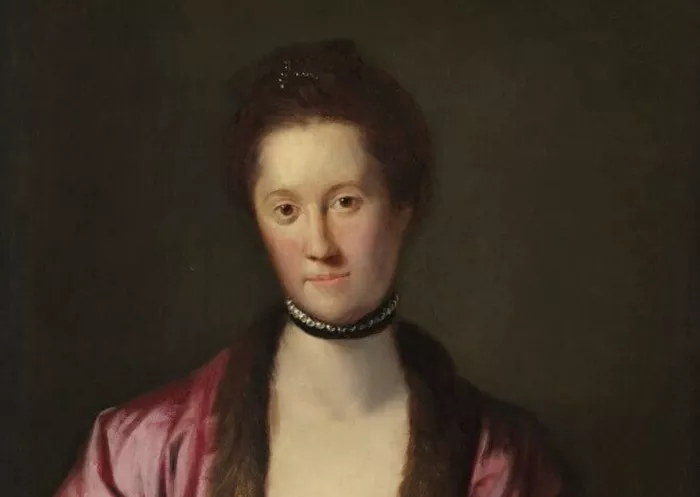The 18th century in Britain was an era of immense literary evolution, with poetry playing a pivotal role in shaping cultural and intellectual discourse. Among the numerous poets of the time, Anna Seward (1742–1809) carved out a distinctive identity, not only as a prominent British poet but also as an advocate for emotional expression and poetic originality. Often referred to as the “Swan of Lichfield,” Seward’s work defied the conventions of her time, merging sensibility with intellectual depth. Her contributions to British poetry, though overshadowed by her male contemporaries, remain significant in understanding the broader literary landscape of the 18th century. This article explores the life, works, themes, and legacy of this remarkable 18th-century British poet.
Early Life and Education
Anna Seward was born in Eyam, Derbyshire, in 1742, but spent most of her life in Lichfield, where she was exposed to a thriving intellectual environment. Her father, Thomas Seward, a clergyman and editor, played a crucial role in her early education, encouraging her literary pursuits. Unlike many women of her time who were restricted from formal education, Seward received exposure to classical literature, history, and poetry. She was deeply influenced by the works of Shakespeare, Milton, and Pope, which shaped her poetic voice.
Lichfield, where Seward grew up, was home to an intellectual circle that included Samuel Johnson, Erasmus Darwin, and other literary figures. This environment fostered her literary ambitions and provided her with an audience that appreciated her poetic talents. Despite societal expectations that limited women’s roles in literature, Seward boldly pursued poetry, challenging the constraints imposed on female writers.
Literary Career and Major Works
Seward’s poetic career gained momentum in the latter half of the 18th century, as she began publishing works that resonated with readers and critics alike. Her poetry often combined elements of sensibility, nature, and personal reflection, distinguishing her from the more rigid neoclassical traditions of the time.
One of her earliest and most notable works was Elegy on Captain Cook (1780), a tribute to the British explorer James Cook. The poem, rich in emotion and admiration, reflected her ability to weave historical events into poetic narratives, a technique that became a hallmark of her work. Another significant collection, Original Sonnets on Various Subjects (1799), demonstrated her mastery of the sonnet form, which was not as widely practiced in her time. These sonnets showcased her lyrical prowess and provided deep insights into her thoughts on love, nature, and mortality.
Apart from her poetic compositions, Seward also wrote biographies and critical essays, including Memoirs of the Life of Dr. Darwin (1804), a biographical work on Erasmus Darwin. This work highlighted her skills in prose and her ability to engage with scientific and philosophical discussions, further solidifying her reputation as an intellectual figure in British literature.
Themes in Seward’s Poetry
Seward’s poetry explored a variety of themes that reflected both personal and societal concerns. Her works were deeply introspective yet also engaged with broader themes that resonated with the intellectual climate of the 18th century.
1. Nature and the Sublime
Nature played a central role in Seward’s poetry, often serving as both a source of inspiration and a medium for exploring emotions. Her descriptions of landscapes were vivid and evocative, reflecting the influence of Romanticism, which was beginning to emerge during her lifetime. She celebrated the beauty and power of nature, aligning herself with poets who viewed the natural world as a source of spiritual and aesthetic fulfillment.
2. Sensibility and Emotion
The 18th century saw a growing emphasis on sensibility—the capacity to feel deeply and express emotions. Seward’s poetry was characterized by a profound emotional intensity, often exploring themes of love, grief, and longing. Her elegies, in particular, demonstrated her ability to channel personal sorrow into poetic form, making her work resonate with readers who valued emotional expression in literature.
3. Feminine Identity and Literary Authority
As a female poet in a predominantly male literary world, Seward often grappled with issues of gender and authority. She was outspoken in her defense of female intellectualism and sought to establish a distinct literary identity that challenged traditional gender norms. Her engagement with the sonnet form, traditionally associated with male poets, was a deliberate assertion of her poetic legitimacy.
Seward’s Influence and Legacy
Despite her literary achievements, Seward’s reputation declined in the years following her death. The rise of Romanticism overshadowed her contributions, and her works were often dismissed as overly sentimental or conventional. However, recent scholarship has reevaluated her place in British poetry, recognizing her as an important transitional figure between neoclassicism and Romanticism.
Seward’s influence extended beyond her own poetry; she played a crucial role in promoting and preserving the works of other poets, including Charlotte Smith and William Hayley. Her correspondence and literary criticism offer valuable insights into the literary culture of the 18th century, making her an important figure in historical studies of British poetry.
Conclusion
Anna Seward remains a significant yet often overlooked figure in 18th-century British poetry. Her contributions to the literary world, particularly her exploration of sensibility, nature, and feminine identity, mark her as a poet ahead of her time. Though she faced challenges in gaining recognition in a male-dominated literary sphere, her work continues to offer rich insights into the evolving landscape of British poetry. As interest in female poets of the past grows, Seward’s legacy is being reassessed, ensuring that her voice remains an essential part of literary history.

